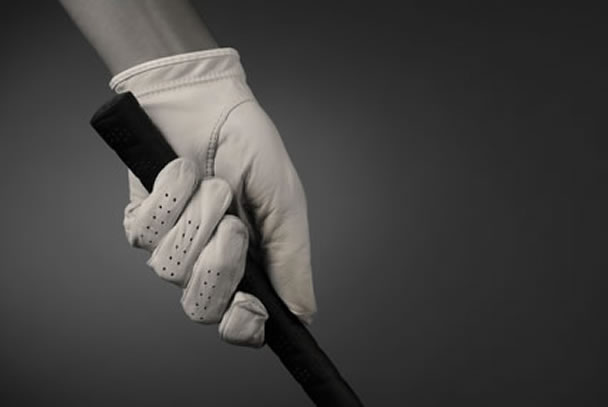Golf: Get a Grip on Your Game

Holding a golf club is as easy as falling off a log and if you have ever fallen off a log, you will know how easy that really is. Gripping a golf club correctly however seems to be more of a challenge, even for some who have been playing for many years.
Why does this prove to be such a problem? Does it really matter how you grip the club?
How you put your hands on the golf club is a crucial factor in making good contact with the ball. Bearing in mind it is one of the fundamentals that even top professionals give constant attention, should be enough to convince us of its importance. Get a proper grip on the golf club and you're well on the way to getting a grip on your game.
There are two basic aspects to taking the proper grip on the golf club. One is the kind of grip that feels most comfortable and the other is where the club rests in your palms. Consider first, the type of grip that feels most comfortable for you. There are three options, two of which are used extensively in the professional game. Take your pick!
Interlocking grip
The interlocking grip is favored by most golfers and is so called because the pinky finger of the right hand interlocks with the index finger of the left hand (reverse for the left-handed golfer). This grip gives tends to give your hands a real feeling of togetherness with less risk of the hands separating on the back swing.
Vardon Grip
Another popular kind of grip is the Vardon Grip, named after Harry Vardon, the famed English golfer in the early twentieth century. The key difference between this and the interlocking grip is that the pinky finger rests between the index and middle finger. It doesn't feel quite as secure as the interlocking grip but is used by a number of top golfers. Experiment with both on the practice range and see what feels best for you.
Baseball Grip
The baseball grip, also known as the ten-fingered grip is often adopted by players new to the game, who don't know any better! With this grip, none of the fingers lock or overlap. The pinky finger will rest against the index finger of the other hand with all ten fingers touching the club. If you do use this grip, make sure to keep your hands together because separating your hands when you grip the club is a recipe for poorly struck shots. Better still; try to master one of the other types of grip described above.
Having settled on the type of grip that feels most comfortable for you, it is also important to place the club in your palms correctly. A common fault among high-handicap golfers is to hold the club too much in the palms of the hands. Although the palms obviously come into play, ensure that the butt of the club runs close to the fingers. You will have more control over your club and strike the ball with more power when you grip the club with your fingers and allow them to influence the shot.
Consult with any golf teacher or professional and he or she will be certain to start your tuition session with a lesson on how to grip the golf club. Yes, it is that important. A proper grip is the first step on the road to better golf!








